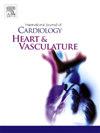Glycemic control after aortic valve replacement: A retrospective study
IF 2.5
Q2 CARDIAC & CARDIOVASCULAR SYSTEMS
引用次数: 0
Abstract
Background
Aortic stenosis (AS) is treated through transcatheter aortic valve implantation (TAVI) or surgical aortic valve replacement (SAVR), with diabetes being prevalent among these patients. Inflammation participates in the pathogenesis of AS, and emerging evidence suggests that TAVI may exert anti-inflammatory effects. Given the established link between diabetes and inflammation, we sought to evaluate the impact of aortic valve replacement (AVR) on glycemic control.
Methods
Data from 10,129 consecutive patients undergoing either TAVI or SAVR between January 2010 and January 2022 were analyzed. Of these, 3,783 with diabetes had available pre- and post-procedural glycated hemoglobin (HbA1c) measurements. Analysis of 1,284 individuals with HbA1c ≥ 7 % was conducted. Propensity-score matching produced two well-matched cohorts of 266 TAVI and SAVR patients, enabling comparison of periprocedural HbA1c.
Results
In the total cohort (n = 1,284), HbA1c decreased from 8.15 ± 1.12 to 7.88 ± 1.38 (p < 0.001). After matching, the TAVI group showed a significant reduction from 8.31 ± 1.31 to 7.86 ± 1.56 (p < 0.001), while a modest decrease from 8.33 ± 1.33 to 8.15 ± 1.61 (p = 0.046) was observed in SAVR group. The TAVI group showed a trend toward a greater percentage change in HbA1c (p = 0.051). Clinically meaningful improvement in HbA1c (≥ 0.3 %) was similar between TAVI (53.1 %) and SAVR (45.6 %) patients (OR = 1.34, 95 % CI 0.93–1.95).
Conclusions
Management of AS through either intervention improved post-procedural glycemia in patients with uncontrolled diabetes. The extent of glycemic improvement was more pronounced with TAVI. Further investigations through controlled and prospective studies could provide more conclusive insights into this matter.

求助全文
约1分钟内获得全文
求助全文
来源期刊

IJC Heart and Vasculature
Medicine-Cardiology and Cardiovascular Medicine
CiteScore
4.90
自引率
10.30%
发文量
216
审稿时长
56 days
期刊介绍:
IJC Heart & Vasculature is an online-only, open-access journal dedicated to publishing original articles and reviews (also Editorials and Letters to the Editor) which report on structural and functional cardiovascular pathology, with an emphasis on imaging and disease pathophysiology. Articles must be authentic, educational, clinically relevant, and original in their content and scientific approach. IJC Heart & Vasculature requires the highest standards of scientific integrity in order to promote reliable, reproducible and verifiable research findings. All authors are advised to consult the Principles of Ethical Publishing in the International Journal of Cardiology before submitting a manuscript. Submission of a manuscript to this journal gives the publisher the right to publish that paper if it is accepted. Manuscripts may be edited to improve clarity and expression.
 求助内容:
求助内容: 应助结果提醒方式:
应助结果提醒方式:


